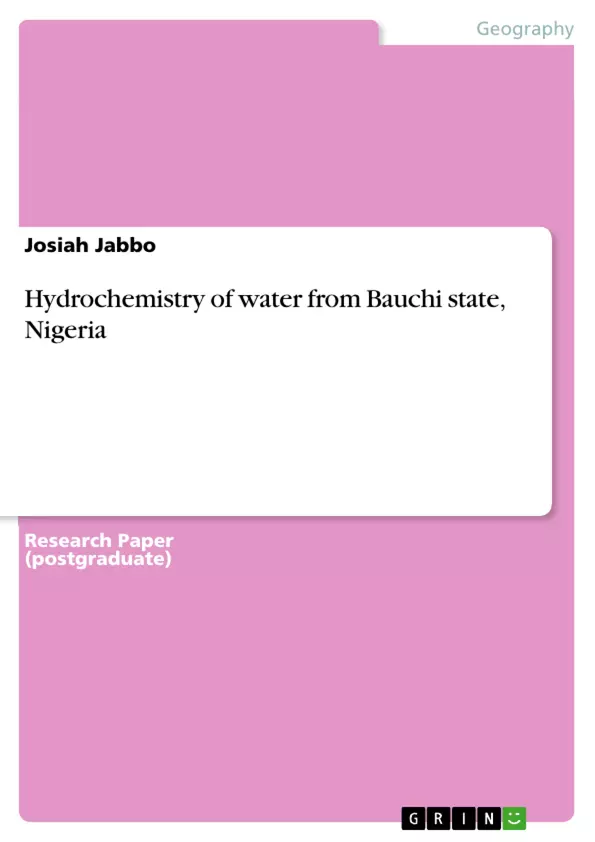Groundwater samples were collected from some villages in Alkaleri Local Government Area of Bauchi State. The samples were analyzed at the Geology Programme laboratory, Abubakar Tafawa Balewa University Bauchi. Concentration of iron, lead, manganese, chromium, calcium, copper, zinc and nickel were determined using the atomic absorption spectrometry (AAS).
Results of the analyses show low values for iron, lead, manganese, calcium and copper in some locations (below the World Health Organizations (WHO) maximum permissible limit for drinking water). Concentrations of nickel and chromium in some locations are high (above the WHO maximum permissible limit for drinking water). Adequate concentrations of some of these trace elements in drinking water help in maintaining metabolism of the human body, however, higher or lower concentrations could have adverse effects on humans.
Inhaltsverzeichnis (Table of Contents)
- 1.0 Introduction:..
- 2.0 Method of Study..
- 3.0 Results and Discussions:....
- Conclusion.
- References....
Zielsetzung und Themenschwerpunkte (Objectives and Key Themes)
This study investigates the hydrochemistry of groundwater samples collected from villages in Alkaleri Local Government Area of Bauchi State, Nigeria. The main objective is to determine the concentrations of various trace elements in the groundwater and assess their potential impact on human health.
- Analysis of trace element concentrations in groundwater.
- Assessment of the potential health risks associated with these elements.
- Evaluation of the geological factors influencing the hydrochemistry of the area.
- Comparison of trace element concentrations with World Health Organization (WHO) guidelines.
- Exploration of the relationship between trace element levels and human health.
Zusammenfassung der Kapitel (Chapter Summaries)
- Introduction: This chapter provides an overview of the study area, its geological setting, and the significance of groundwater resources in the region. It also introduces the research objectives and methodology.
- Method of Study: This chapter details the sampling procedure, analytical methods used to determine trace element concentrations, and the laboratory facilities employed for the study.
- Results and Discussions: This chapter presents the findings of the study, including the concentrations of various trace elements in the groundwater samples. It analyzes the results, discusses the potential health implications of the findings, and explores the factors influencing the hydrochemistry of the area.
Schlüsselwörter (Keywords)
The study focuses on hydrochemistry, groundwater, trace elements, health risks, geological setting, Alkaleri Local Government Area, Bauchi State, Nigeria, atomic absorption spectrometry (AAS), World Health Organization (WHO) guidelines.
- Quote paper
- Josiah Jabbo (Author), 2010, Hydrochemistry of water from Bauchi state, Nigeria, Munich, GRIN Verlag, https://www.grin.com/document/335318



